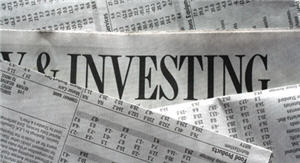 ETFs are often promoted as a cheaper way to invest than mutual funds. But are the lowest-cost ETFs really any better than the cheapest mutual funds? Broker Insider takes a look.
ETFs are often promoted as a cheaper way to invest than mutual funds. But are the lowest-cost ETFs really any better than the cheapest mutual funds? Broker Insider takes a look.
First, let’s define our terms. An exchange traded fund (or ETF) is basically a special type of mutual fund that you can buy or sell at any time during market hours. This is in contrast to the usual mutual funds, which you can only buy or sell at the end of the day. This “tradability” is advantageous if you like to wait for the precise moment to buy or sell, or want to do it frequently. The drawback is that you’ll need to pay a commission whenever you want to trade. (You can minimize these fees by using very low-cost brokers like Zecco.)
Now when we say ETFs are cheaper, we’re generally saying that they have a lower expense ratio than that of mutual funds. The “expense ratio” is how most funds earn their money, and it is defined as the fund’s annual expenses divided by its total assets.
We can use expense ratios to see that ETFs are actually cheaper, on average. The average ETF expense ratio is only about 0.5%, compared to that of the average mutual fund, which is around 1.5%. But that’s not the whole story, since the average mutual fund ratio conceals a lot of diversity.
The mutual fund average includes both actively managed funds — funds where a fund manager hand-picks the stocks or other assets to be included in the fund — as well as index funds, where the portfolio simply replicates the performance of a stock index like the S&P 500.
Actively managed mutual funds are expensive, since they usually have to pay the high salaries of the celebrity fund manager, marketing expenses, and such. Index mutual funds are much cheaper, since you are mostly paying for a computer to replicate the index by trading in the background. (It’s actually a lot more complicated than that, but take our word for it.)
Most ETFs are essentially identical to index mutual funds, since in most cases they are simply tracking an index, and likewise they are being managed by computer. So really, the relevant comparison is ETFs vs. index mutual funds. (There are no actively managed ETFs — at least, not yet.)
When you compare the average index mutual fund to a typical ETF, the cost difference narrows quite a bit. Index mutual funds typically have expense ratios of 0.2 to 0.6%, making them directly competitive with ETFs. And some of the biggest mutual funds, like Vanguard’s Total Stock Market Index Fund (VTSMX) have expense ratios as low as 0.07% when you invest $10,000 or more.
And that’s the important comparison: you need to compare the expense ratio of an individual ETF to that of a similar individual mutual fund, keeping the asset class (stocks, bonds), investing style (index, preferably), and portfolio management style all the same. This makes sense, because you aren’t buying the average fund — you’re buying a particular fund with a certain objective, and you just want to know that it’s the cheapest way to invest in those assets.
When you do the research, you’ll find that ETFs are often just a hair cheaper than the equivalent mutual fund. Let’s take a look at ETFdb’s list of the cheapest mutual funds. What you’ll see is that Vanguard, Schwab, and iShares are all slugging it out to be the cheapest funds for the biggest indexes, like the S&P 500 or total market funds for stocks or bonds.
There’s a simple reason for this: with the rise of ETFs, there’s suddenly a big land grab going on right now in the investing world. Relatively new fund families like iShares are determined to come out on top, as are old line low-cost mutual fund companies like Vanguard, Schwab, and Fidelity. Thus, for marketing and customer acquisition purposes, they are keeping expense ratios really low — for now — and that means just beating out mutual funds that are managed identically.
So it ETFs are cheaper, right? Well, that’s not the whole story. There’s an issue with trading spreads, and we’ll deal with that in Part 2 of this series.
 ETFs are often promoted as a cheaper way to invest than mutual funds. But are the lowest-cost ETFs really any better than the cheapest mutual funds? Broker Insider takes a look.
ETFs are often promoted as a cheaper way to invest than mutual funds. But are the lowest-cost ETFs really any better than the cheapest mutual funds? Broker Insider takes a look. If you do any research on forex trading, you’ll quickly find dozens of software packages that enable you to automate your buying and selling activity. These “forex robots” or “autopilots” promise to identify currency price trends and trade intelligently on them to make you money. Sadly, forex robots are scams: they don’t work, and only make you lose money faster.
If you do any research on forex trading, you’ll quickly find dozens of software packages that enable you to automate your buying and selling activity. These “forex robots” or “autopilots” promise to identify currency price trends and trade intelligently on them to make you money. Sadly, forex robots are scams: they don’t work, and only make you lose money faster. For the first time in several years, a new online stockbroker has emerged with a (somewhat) unusual business model:
For the first time in several years, a new online stockbroker has emerged with a (somewhat) unusual business model: 